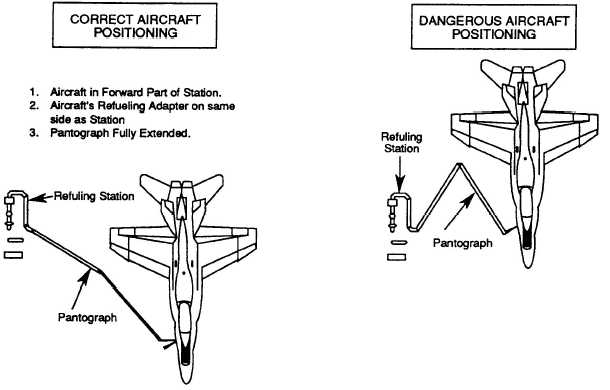CAUTION
No nozzle samples are taken after the
aircraft has taxied into the designated hot-
refueling area. Sampling increases the
possibility of a fuel spill.
• The station or mobile refueler must be
recirculated (flushed) and fuel sample(s) taken for
quality control checks as appropriate (station
operator).
• The area must be policed for FOD.
• Ground crew must wear sound-attenuating ear
protectors, goggles, and cranials.
CAUTION
Hot refueling must NOT be performed
if a hot-brake condition exists.
• Fixed-wing aircraft must be checked for hot-
brake condition (plane captain). The hot-brake check
is applicable to fixed-wing aircraft only.
• Qualified squadron personnel MUST verify
that all ordnance is safed. Safed is defined as the
replacement of any mechanical arming level, safety
pin, electrical interrupt plug/pin; securing of
armament switches; and/or any other action that
renders any ordnance earned as being safe.
• The aircraft is taxied into the hot-refueling
area under the guidance of a qualified aircraft
director. The aircraft enters the area so that the
refueling receptacle is on the side of the aircraft
nearest the pantograph or hose.
CAUTION
The pantograph must be extended a
distance sufficient for the emergency dry-
break-away device to work properly without
the pantograph interfering with movement
of the aircraft. See figure 7-11.
— The hose or pantograph must NOT pass
underneath the aircraft to reach the
nozzle receptacle.
— Refueling must be stopped immediately if
any leaks are discovered during the
operation.
Figure 7-11.—Positioning aircraft for pantograph refueling.
7-21

